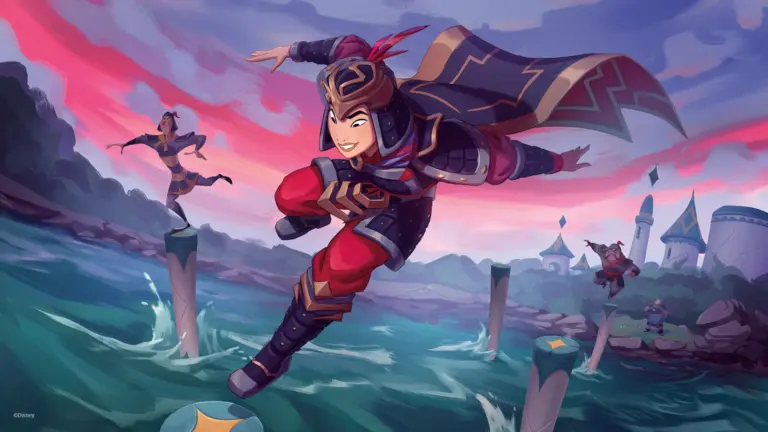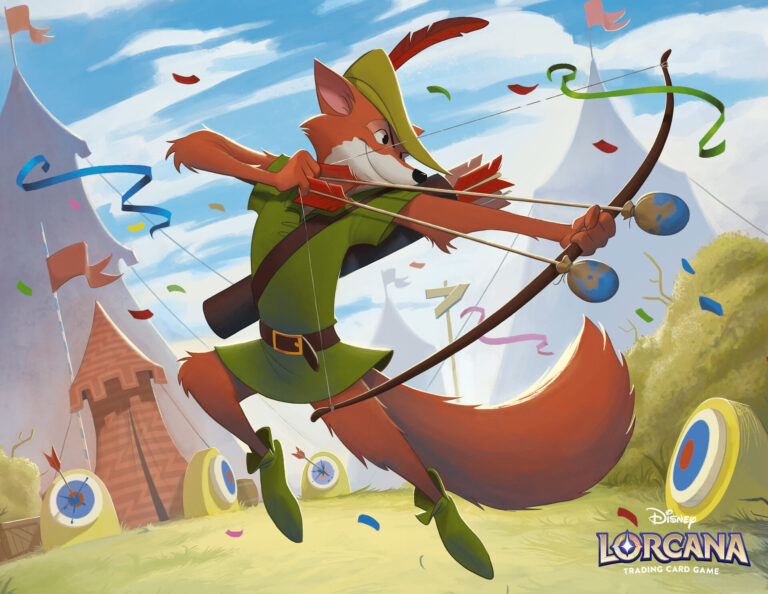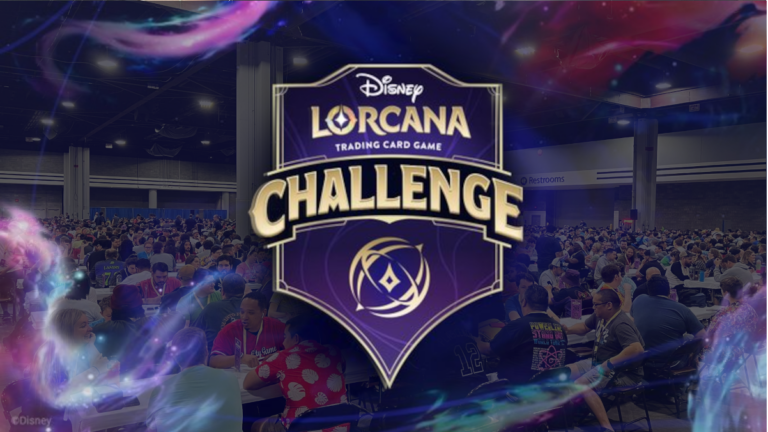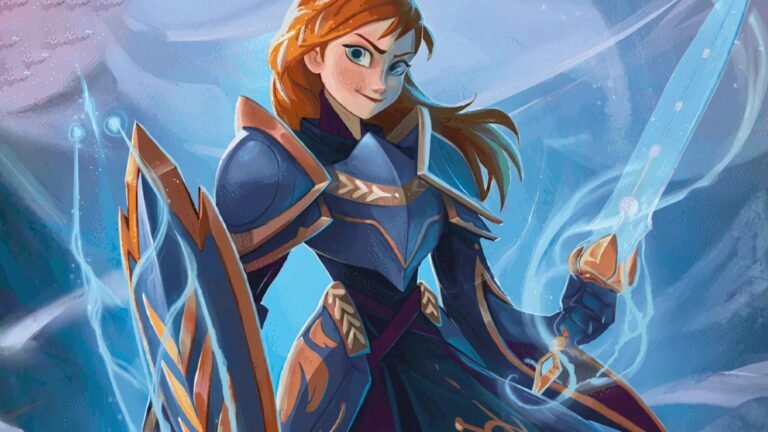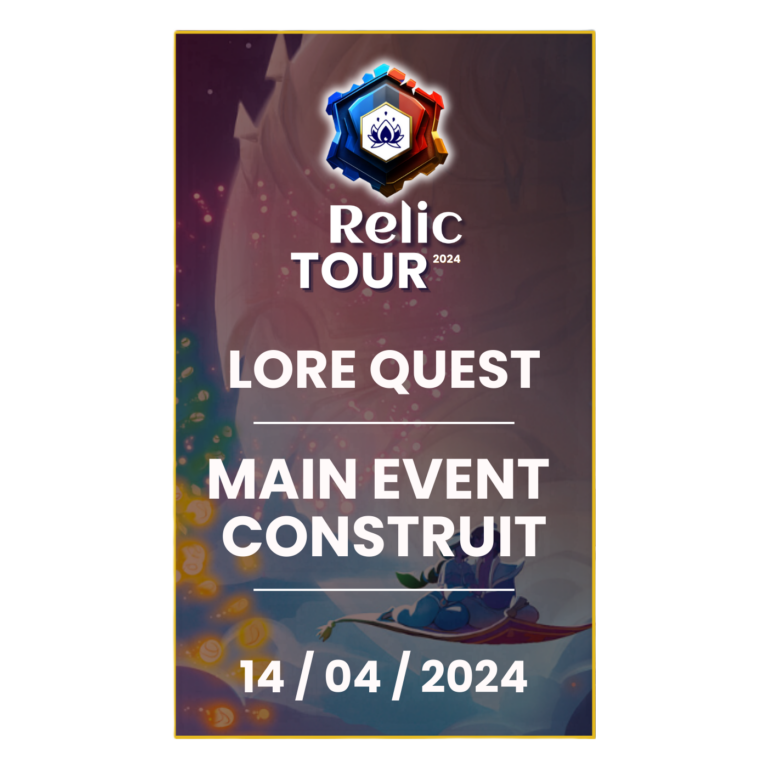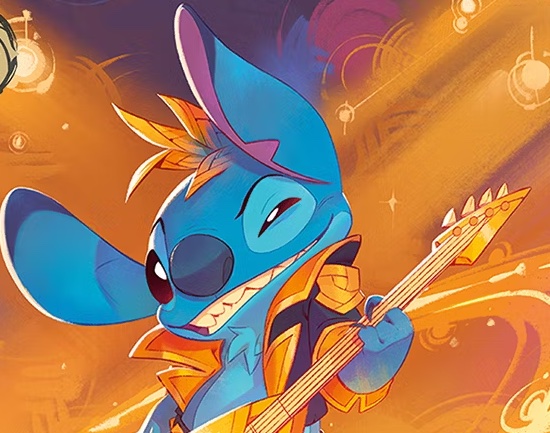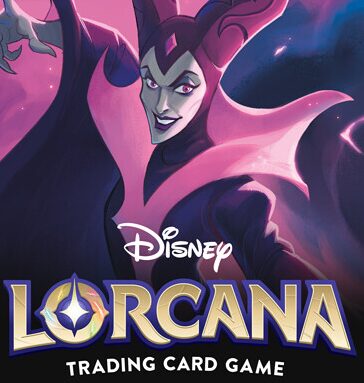Table of Contents
In this series of articles we will try to understand and analyze Pixelborn data more precisely. Indeed, if you are here you should probably be used to the meta analysis made here on lorcana.gg or by gillygabyte on the Pixelborn discord server.
But I asked myself “Can we go deeper and predict the next coming tournament metagame?” I will gather some thoughts and hypotheses in this series of articles in order to reach this precious aim and help you to crush your next tournaments!
Meta Shift According to Player Level
Today, I will focus specifically on the deck's representation according to players’ level. First things first, data used will come from the Pixelborn Discord. In this Discord server you can find plenty of data over every game played during the previous weeks.
Data here are divided into 3 categories:
- Category 1 : All games (regardless of players’ ranking)
- Category 2 : At least one of the top 100 players has participated in the game (quite explicit)
- Category 3 : Both players are from the top 100 (quite explicit too)
This split in different categories allows us to emphasise data with players’ level!
Let's put all the data in the same table to have a better overview:

What comes to me first is that data from 1 or both players being in the top 100 are very close to each other. So let’s simplify and keep only both player in top 100 column for today:
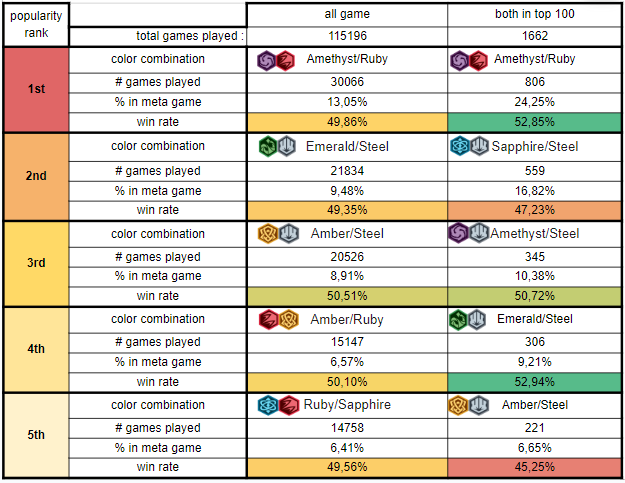
Moreover, one main difference between players from the top Pixelborn ladder and the others is that top ladder players are really dedicated to the game. Indeed, you need to play a lot in order to reach Grandmaster level. According to their dedication level we can assume that top players know the metagame very well and also know the most recent deck lists as soon as they crop up.
All Decks Have a 50% Win Rate
Now let’s dive into the table. One thing to highlight from all games played is that the win rate is very close to 50% for all the most played decks. So what does it mean? Why are the Amethyst/Ruby Control decks crushing tournaments and top 8s but only putting up a 50% win rate on ladder?
This 50% win rate from all level games played represents the fact that even if the best deck is clearly identified at all levels, not everyone is able to play it perfectly. It’s even harder for new Amethyst/Ruby players to win since almost everyone knows the deck and has developed their own strategy to play against it with their own deck.
Community Impact on Emerald/Steel
Second in popularity across every game and only 4th at the highest level, Emerald/Steel has been popularized since Christmas with this youtube video from Zefa. In his video Zefa explains (with great humor, as always), why Emerald/Steel is a good deck against Amethyst/Ruby which lead the deck to become one of the best decks in the metagame.
Top Players Reacting Fast
But as soon as Emerald/Steel became more and more played, people tried to figure out what could be a counter to this deck and the answer was already in this same video.
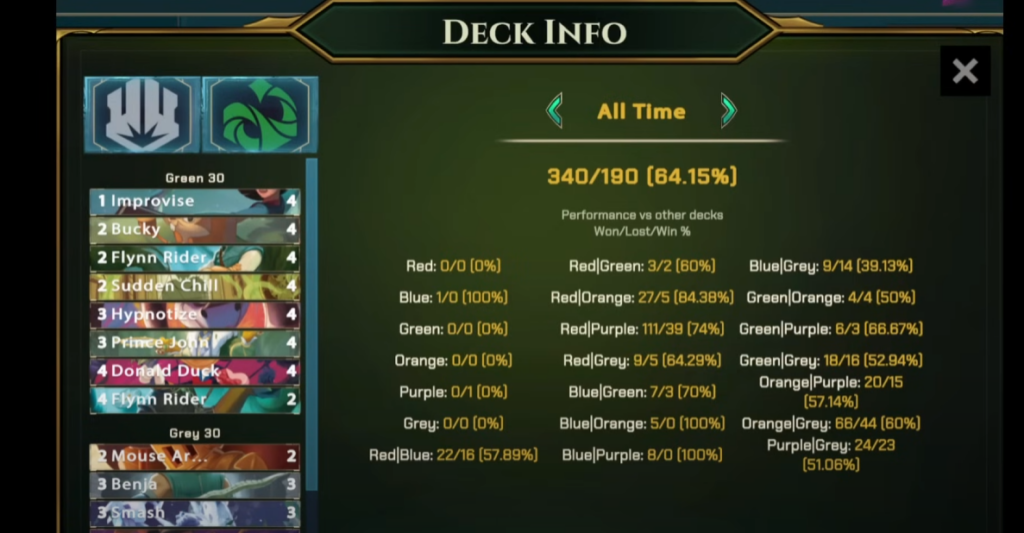
By sharing Emerald/Steel data log from zeroskatr12, every one could see that the worst matchup for Emerald/Steel is Sapphire/Steel. This archetype was already a solid color combination with a lot of good cards and some of the most powerful tools available in the game, including the ink power of Fishbone Quill and the fast hand refill enabled by A Whole New World.
This explains why Emerald/Steel is more popular at lower players’ level. Meta shifting to Sapphire/Steel is too fresh at the top players’ level and will follow soon at all levels for sure. And, consequently, Emerald/Steel will also lose popularity at a lower level too.
Remaining Color Combinations
Amber/Steel is well represented and has a good win rate at any level but is less popular and seems to struggle more at the top of the ladder, losing 5% point of win rate. This might be explained by the fact that the deck is quite easy to play and has some “auto wins” but needs more effort to win when you don’t have the nuts and/or play against a well prepared opponent.
Amber/Ruby is quite similar to Amber/Steel in the way that the game plan is pretty linear and the win is way more dictated by the order of your deck than players' decisions.
Ruby/Sapphire still seems quite popular despite its win rate. There are two ways to explain it. First, the deck was quite strong at set 2 release before heavily losing to Amethyst/Ruby, so the more casual players may not have updated their lists yet or possibly just still believe in this color pair to face decks other than Amethyst/Ruby. The second explanation is that drawing cards from Pawpsicle and Hiram Flaversham - Toymaker is very cool. 😎
Finally, Amethyst/Steel is only represented at the top players level where Amethyst/Ruby is the most represented (24%) and needs a reliable answer even against the best pilots.
Conclusion
The metagame is not the same at the average level than the top 100 players’ level. Most of the meta analysis has been focusing on the top ladder level or top 8 tournament results, which can lead to a misunderstanding of your local metagame.
Let’s be more realistic and say that your local metagame is closer to the average players’ level than the top 100 players’ level. In that case, you will for sure have a majority of Amethyst/Ruby, but then, the 2nd and the 3rd most represented decks will more likely be Amber/Steel and Emerald/Steel than Sapphire/Steel and Amethyst/Steel.


